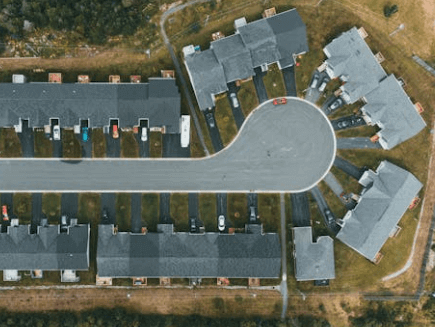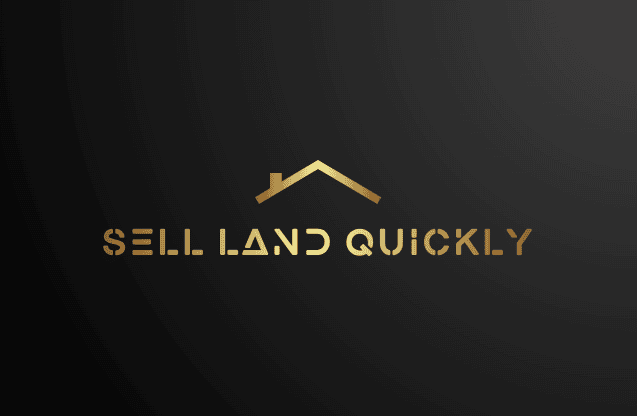Land on a cul-de-sac has become highly sought after, offering privacy, reduced traffic, and enhanced curb appeal for homeowners. Did you know that properties on cul-de-sacs can command 20-30% higher values in suburban neighborhoods due to their desirability? Renowned real estate experts Steve Daria and Joleigh, known for their exceptional track record as cash land buyers, emphasize the unique investment potential of these properties. With their tranquil setting and family-friendly appeal, a land on a cul-de-sac often attracts buyers who seek safety and a sense of exclusivity. Studies have also found that homes on cul-de-sacs experience significantly less noise pollution compared to those on main roads, adding to their appeal. Whether you’re looking to build your dream home or capitalize on rising property values, these lots present compelling opportunities. Want to learn more about how investing in land on a cul-de-sac could fit your goals? Schedule a free discussion with Steve and Joleigh today to explore your options and make informed, confident decisions.
What is land on a cul-de-sac?
Land on a cul-de-sac refers to property situated at the end of a street that forms a circular or dead-end layout.
This type of land is often valued for its privacy and reduced traffic, making it appealing to families and those seeking a quieter living experience.
Homes or land in this setting are typically positioned away from major roads, which enhances safety and creates a more peaceful environment.
The design naturally limits the number of passersby, adding a sense of exclusivity to the area.

Residents also benefit from the spacious layout, often providing larger yards or unique landscaping opportunities.
Additionally, many people appreciate the community-friendly vibe, as cul-de-sacs often foster closer interactions among neighbors.
Before investing in or developing this type of property, it’s important to consider local zoning rules and road maintenance responsibilities.
Overall, land on a cul-de-sac offers unique benefits that cater to those prioritizing tranquility and a sense of community.
Get Started: Get Your Cash Offer Below…
We are direct land buyers. There are no commissions or fees and no obligation whatsoever. Start below by sharing where your property is and where we can send your offer…
What factors increase the value of land on a cul-de-sac?
Several factors can enhance the value of land on a cul-de-sac, making it an attractive option for buyers and homeowners.
First, these properties tend to offer more privacy than those on busier streets, with less traffic and fewer cars passing by.
This creates a quieter, more peaceful atmosphere that many people appreciate, especially families with children.
Parents often feel safer letting their kids play outside or ride bikes, since there is less risk from vehicles.
Another factor is the potential for larger lot sizes and yards, which means more space for gardens, outdoor furniture, or even home additions.
The appeal of having more land is a strong selling point for many. Easy access to local amenities, such as schools, parks, and shops, is another factor that can enhance property value.
Neighborhoods with well-kept homes, attractive landscaping, and a welcoming community feel also help raise property values.
Altogether, these elements work together to ensure that land on a cul-de-sac is consistently viewed as valuable and in demand.
What are some potential challenges of owning land on a cul-de-sac?
- Limited Parking Availability: The circular layout often limits street parking for guests, especially during large gatherings or holidays. This may lead visitors to park farther away or in less convenient areas.
- Higher Road Maintenance Costs: Repairs and upkeep for cul-de-sac roads may not occur as frequently as on main streets, as they are less of a priority for city maintenance. The costs for road care are usually split among fewer households, so that each owner might pay more.
- Drainage and Flooding Issues: Water can collect in certain spots after rain due to the shape of cul-de-sacs. Without good drainage, this pooling can lead to property damage and extra maintenance.
- Potential Zoning Restrictions: There may be stricter zoning rules that limit building options or plans for additions. Always check local codes before planning any projects or improvements.
- Traffic Flow Challenges: Turning large vehicles can be challenging in limited spaces, which may cause delivery or emergency access issues. This issue can also create extra wear on roads and increase the need for cooperation among neighbors.
Does land on a cul-de-sac have different utility access or restrictions?
If you own land on a cul-de-sac, there are several important considerations regarding utility access and potential restrictions.
Due to the unique, curved layout of a cul-de-sac, it can sometimes be more expensive or complicated to install basic services, such as water, electricity, and sewage.
Because the lots are often at the end of a longer road, utility providers might need to extend pipelines, wires, or cables a greater distance to reach your property.
This extra distance can sometimes mean additional fees for installation or future repairs.
In some neighborhoods, homeowner associations (HOAs) or local city rules may have specific guidelines regarding the placement of utility lines, such as septic systems, drainage pipes, and even cable or internet lines.
For example, you may need a special permit or approval to change or upgrade these systems.
Shared maintenance agreements for private roads or shared driveways are also common, and they might impact who pays for repairs or upgrades to the utilities.
It’s a good idea to consult with utility companies, review local codes, and check any HOA guidelines before making significant changes.
Planning ahead ensures a smooth move to a cul-de-sac.
Are there any special regulations or restrictions for land on a cul-de-sac?
- Zoning Limitations: Many cul-de-sac lots have zoning rules that restrict what can be built or how the land is used. Some areas may not permit commercial structures or additional buildings, so it’s essential to check local laws before making any planning changes.
- HOA Guidelines: If a homeowner association (HOA) manages your cul-de-sac, there could be rules about property appearance and maintenance. These can include restrictions on paint colors, landscaping features, fences, or even mailbox design.
- Easement Requirements: Some properties may have easements for utilities or shared driveways. These easements can limit where you place buildings, additions, or large landscaping elements on your land.
- Road Maintenance Responsibilities: Residents often share costs for maintaining the private road in a cul-de-sac. This can mean extra ongoing expenses beyond what you would pay for a typical public street.
- Drainage and Environmental Rules: Cul-de-sac layouts often require specialized drainage systems to prevent water accumulation. Any changes to the property may require city permits to ensure the environment remains safe and protected.
- Utility Access Challenges: Getting connections for water, electricity, or internet may be more complex due to the unique layout of cul-de-sac roads. This can sometimes result in longer wait times or higher installation costs for certain utility services.
- Parking Limitations for Guests: Due to limited street space, guest parking can be a challenge, especially during gatherings or holidays. Plan ahead or get creative with parking solutions to accommodate visitors.

What steps should I take to buy land on a cul-de-sac?
Buying land on a cul-de-sac can be an exciting opportunity, but it’s essential to follow the right steps to ensure a smooth experience.
Begin by thoroughly researching available properties in your desired location, taking the time to compare features and amenities.
Review local zoning regulations for each property to ensure your intended use is allowed, whether building a home or making future improvements.
Next, assess your budget and secure pre-approval for financing to gain a clear understanding of what you can comfortably afford.
It’s also wise to visit each property in person, where you can assess the neighborhood, road access, and determine if there are potential upkeep responsibilities, such as extra landscaping or private road fees.
It’s highly beneficial to work with a real estate agent who specializes in cul-de-sac properties.
Their expertise can help you identify ideal lots, coordinate viewings, and negotiate successfully on your behalf.
Before making any offer, contact local authorities or the homeowner’s association to determine the applicable rules, restrictions, and easements.
After a thorough inspection of drainage, utilities, and infrastructure, finalize your purchase by securing all necessary legal documents and obtaining the required approvals.
Take the first step today—contact a trusted local realtor to explore your options!
Takeaway
- Enhanced Privacy: Homes on cul-de-sac land often experience less through traffic, creating a quieter living environment. This serene and secluded setting is ideal for families and individuals seeking a tranquil lifestyle.
- Increased Safety: With reduced traffic flow, cul-de-sacs are ideal for safe outdoor activities, such as biking or playing. This design makes them particularly popular among families with children.
- Strong Community Feel: Cul-de-sacs naturally foster closer connections among neighbors due to their limited access and shared spaces. This can lead to a greater sense of belonging and security in your neighborhood.
- Higher Property Value: The exclusivity and appeal of cul-de-sac properties often result in higher resale values. These homes attract buyers seeking both comfort and long-term investment potential.
- Flexible Outdoor Space: Cul-de-sac lots often feature larger yards or unique shapes, providing more design potential. This extra space is perfect for landscaping, gardens, or outdoor entertaining areas.
**NOTICE: Please note that the content presented in this post is intended solely for informational and educational purposes. It should not be construed as legal or financial advice or relied upon as a replacement for consultation with a qualified attorney or CPA. For specific guidance on legal or financial matters, readers are encouraged to seek professional assistance from an attorney, CPA, or other appropriate professional regarding the subject matter.
